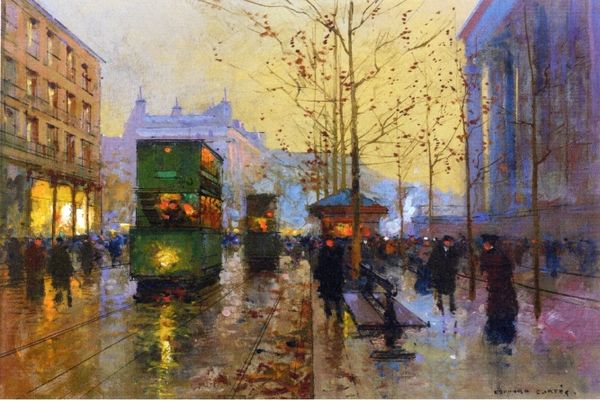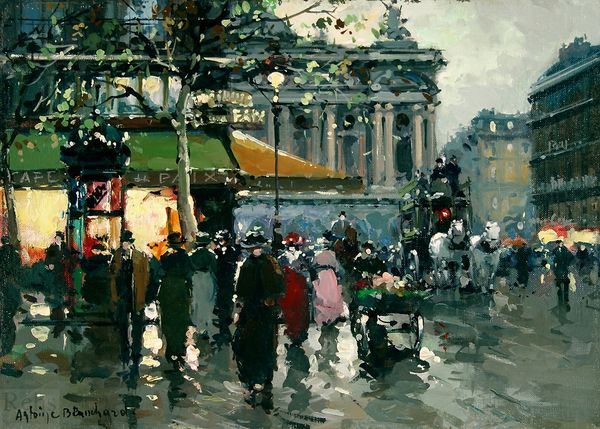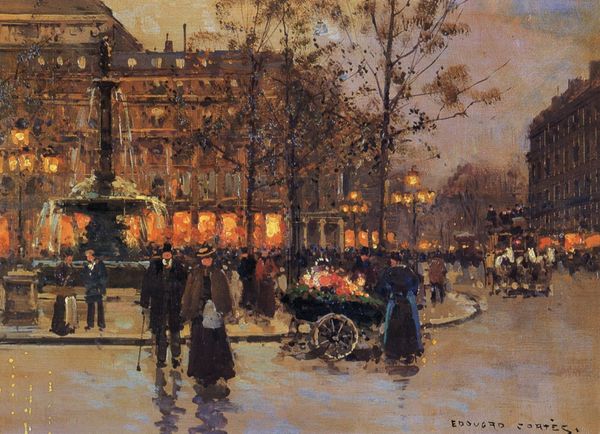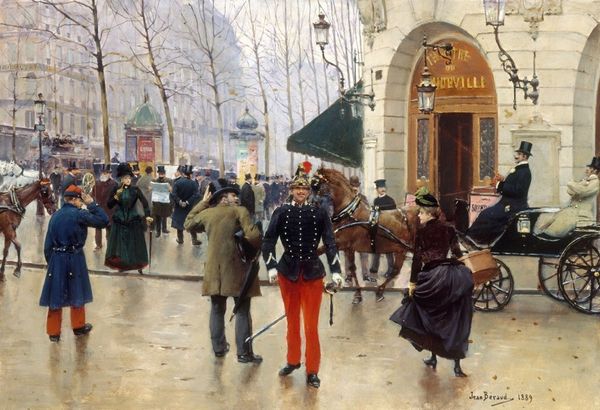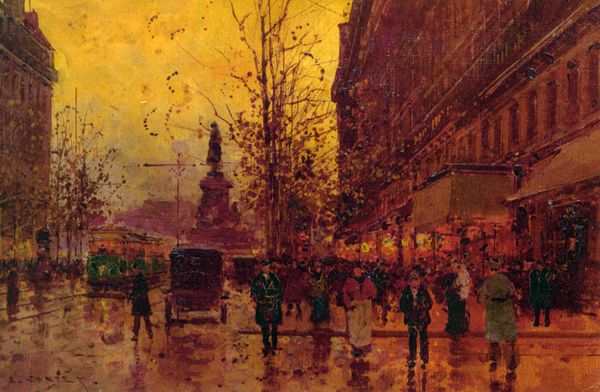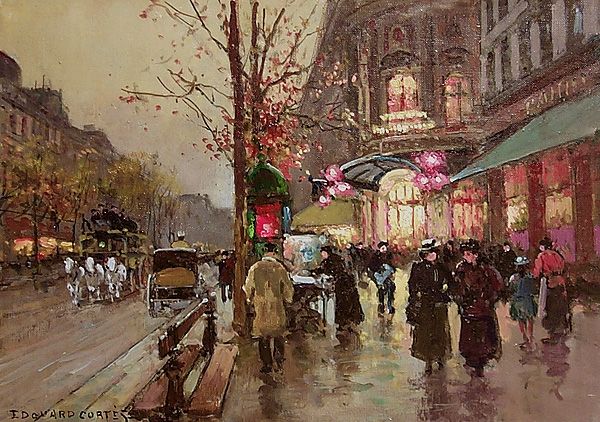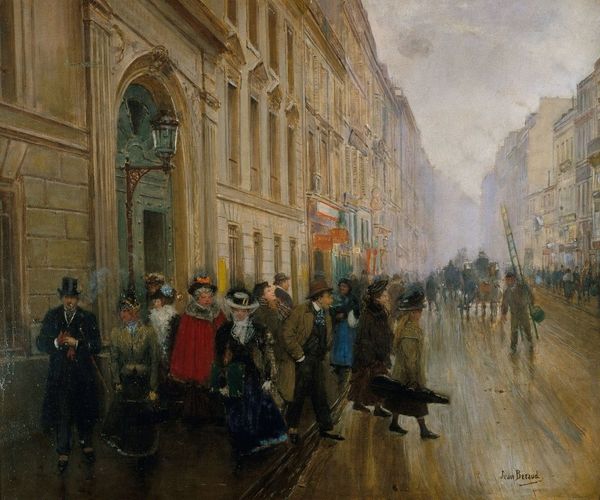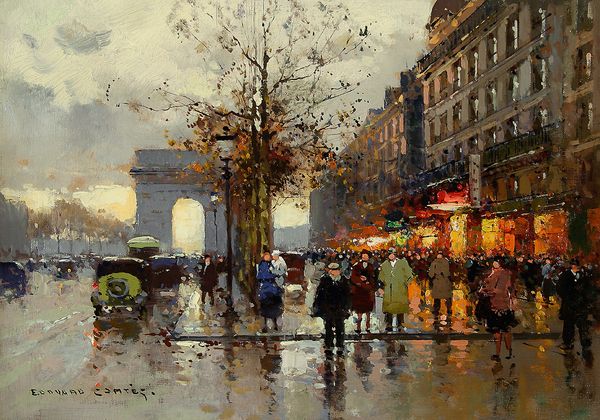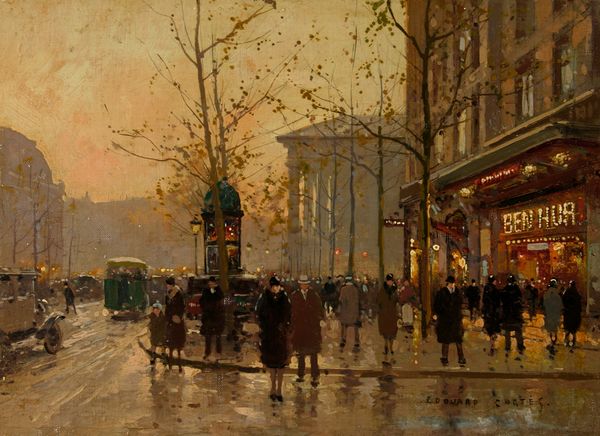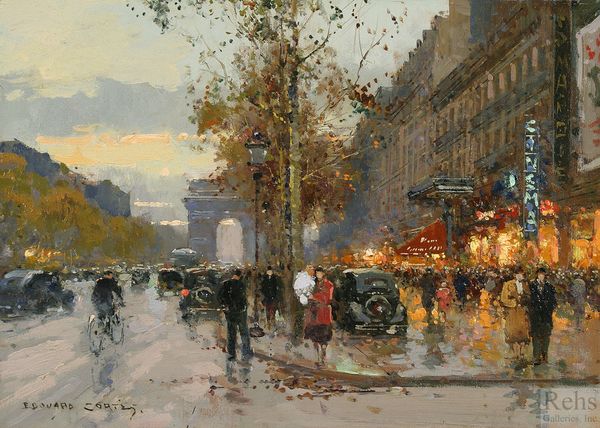
painting, plein-air, oil-paint
#
figurative
#
flâneur
#
painting
#
impressionism
#
plein-air
#
oil-paint
#
impressionist landscape
#
oil painting
#
urban art
#
cityscape
#
genre-painting
Copyright: Public Domain: Artvee
Editor: Here we have Jean Béraud’s "La colonne Morris," painted around 1885, using oil on canvas. There's something melancholic about the muted colors and the hazy atmosphere, like a memory fading away. What strikes you about this piece? Curator: Formally, the painting orchestrates a dialogue between stasis and movement. The cylindrical form of the column presents a stable, vertical counterpoint to the implied motion of the figures and carriages in the background. Notice how Béraud uses short, broken brushstrokes—hallmarks of Impressionism—to create a sense of fleeting time. Editor: So the brushstrokes capture a feeling of impermanence, like a snapshot? Curator: Precisely. Consider the materiality of the surface. The texture is built up in layers, suggesting not just a visual scene, but also the passage of time acting on the urban environment itself. What do you make of the subdued color palette? Editor: The grayness, punctuated by muted yellows and greens, makes the column's posters stand out just enough to draw my eye. Curator: The subtle color harmony is quite deliberate, pushing the viewer to perceive the scene through feeling, through effect, more than clarity. This pushes the limits of mimesis as artistic goal. Editor: I hadn't thought about how the muted colors contributed to the mood so intentionally. Curator: Indeed. Béraud offers a nuanced depiction, a semiotic engagement where structure and content, movement and fixity coexist, enriching the reading of the piece. Editor: I see so much more now. Thinking about those contrasts, the feeling comes to life even more! Curator: Indeed. The work resides not simply in what is represented, but in the very way representation happens.
Comments
No comments
Be the first to comment and join the conversation on the ultimate creative platform.
